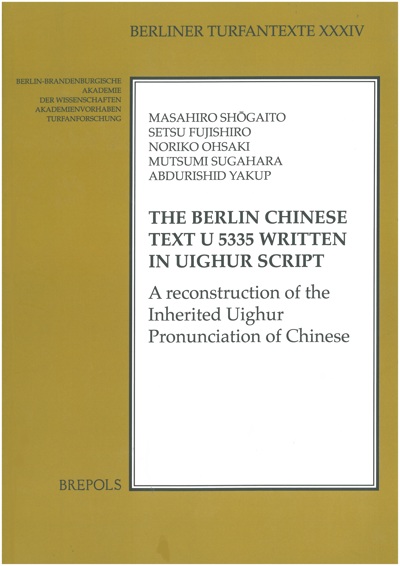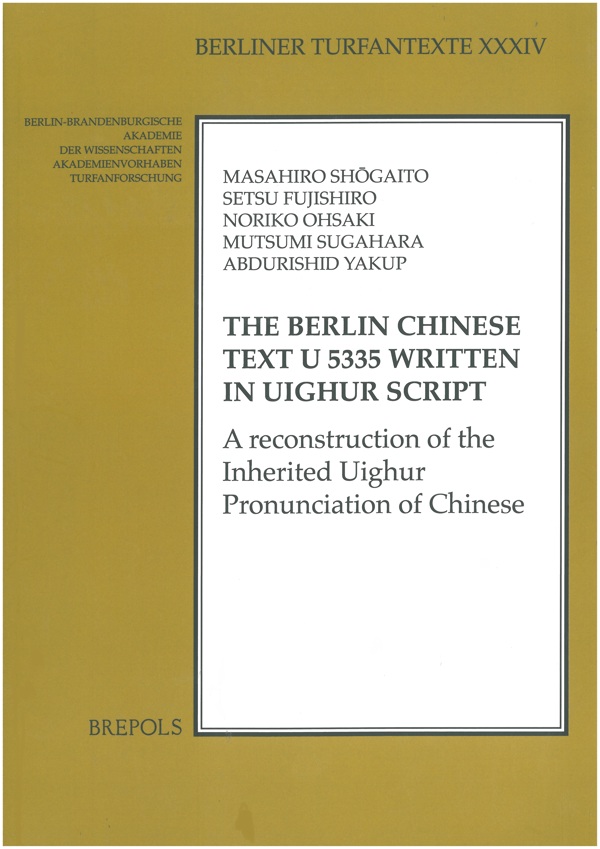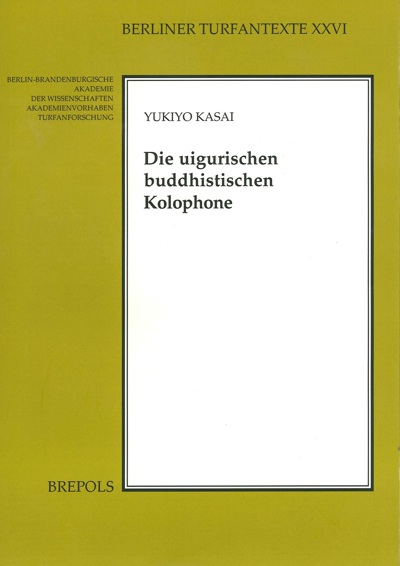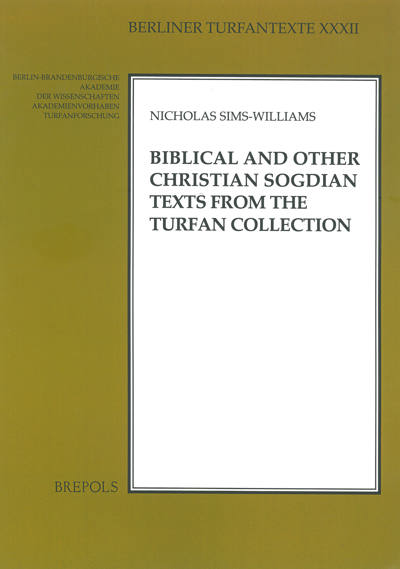
The Berlin Chinese text U 5335 written in Uighur script
A reconstruction of the Inherited Uighur Pronunciation of Chinese
Masahiro Shogaito, Abdurishid Yakup, Setsu Fujishiro
- Pages: 215 p.
- Size:210 x 297 mm
- Illustrations:41 b/w
- Language(s):Uygur, Chinese
- Publication Year:2015
- € 80,00 EXCL. VAT RETAIL PRICE
- ISBN: 978-2-503-56541-5
- Paperback
- Available
This is an edition of the Chinese text U 5335 written in Uighur script and preserved in the Berlin Turfan Collection.
“(…) this book represents an important achievement that has contributed considerably to the advancement of our knowledge and will doubtlessly serve many generations of scholars to come as an important source of information.” (Alexander Vovin, in Orientalistische Literaturzeitung, 113/3, 2018, p. 181)
Japanese philologist and linguist, Masahiro Shogaito was Professor and Professor Emeritus of Kyoto University and President of Japan Linguistic Society, author of several books on Old Turkic philology, among them "Uighur Abhidharma texts: A philological study" (2008) received Japan Academy Prize in 2011. Prior to this, in the years between 1991-93 he published a book entitled “A Study on the Abhidharma-kośa-bhāṣya-tīkā Tattvārthā in Old Uighur Language” in three volumes.
Specialized in Old Turkic philology and Turkic linguistics, Abdurishid Yakûp is author of the books "Prajñāpāramitā Literature in Old Uyghur" (Berliner Turfantexte XXVIII, Brepols 2010), "Dišastvustik: Eine altuigurische Bearbeitung einer Legende aus dem Catuṣpariṣat-sūtra" (Veröffentlichungen der Societas Uralo-Altaica 71, Harrassowitz 2006) , "The Turfan dialect of Uyghur" (Turcologica 63, 2005).
This volume contains a complete edition of the Chinese text U 5335 in the Berlin Turfan collection which is written in Uighur script. It also presents a reconstruction of the Inherited Uighur Pronunciation of Chinese (IUPC) based on U 5335 and other Chinese texts also written in Uighur script. The book consists of four chapters: the first begins with a review of research on IUPC and then discusses Chinese words in the Uighur translation of the Xuan-zang Biography. Moreover, it provides analysis and explanations of the phonological characteristics of IUPC. In addition, this chapter also deals with eight new Chinese texts written in Uighur script other than U5335. The introductory chapter concludes with a discussion of diachronic aspects of IUPC. The second section deals with the edition of U 5335 and the reconstruction of the Chinese pronunciation reflected in U 5335. Chapter three discusses two ways of reading Chinese characters used by Uighurs: IUPC and the so-called “Uighur reading”. The final section of this in-depth study presents a complete list of IUPC, including U5335 and other Chinese texts written in Uighur script.



